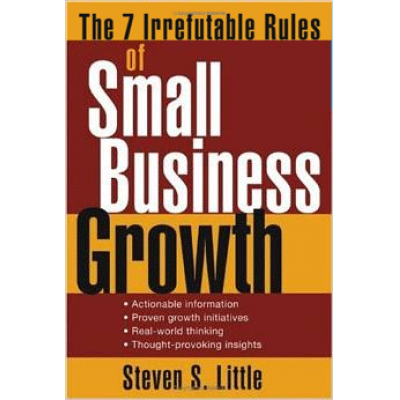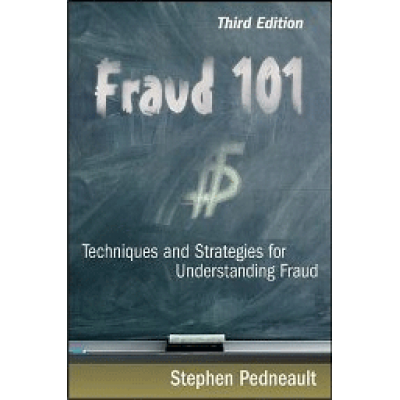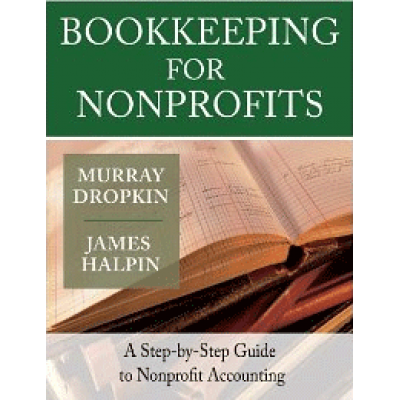Matching Investments to Tax Saving Techniques 2020 - 16 CPE Credit Hours
The tax professional is in a special position to detect a client's need for financial planning. Preparing returns discloses assets, savings, business entities, and family members. Knowledge of the client's assets, activities and the tax characteristics of available entities permits investment matching for maximum after-tax return.
Taxes aren't taxes – they are dollars in terms of the net return on investment. All tax professionals need to know the tax-economics of investing for themselves and their clients. This need is accentuated by the rapid rise of the Internet as a broad-based and effective investment tool.
The tax professional is in a special position to detect a client's need for financial planning. Preparing returns discloses assets, savings, business entities, and family members. Knowledge of the client's assets, activities and the tax characteristics of available entities permits investment matching for maximum after-tax return.
The basic tax characteristics of the primary tax entities are explored and analyzed. Their ability to defer, reduce, and eliminate tax is examined. Client goals, purposes, and risk tolerances are determined and quantitated using the Sharp ratio. Investments and assets are then evaluated using a variety of tools found on the Internet. Finally, investments and entities are matched to produce the best after-tax return for the client.
Completion Deadline & Exam: This course, including the examination, must be completed within one year of the date of purchase. In addition, unless otherwise indicated, no correct or incorrect feedback for any exam question will be provided.
Course Level: Overview. This program is appropriate for professionals at all organizational levels.
Field of Study: Taxes
Prerequisite: General understanding of federal income taxation.
Advanced Preparation: None
Learning Assignments & Objectives
As a result of studying each assignment, you should be able to meet the objectives listed below each assignment.
ASSIGNMENT SUBJECT
Chapter 1 Introduction
At the start of Chapter 1, participants should identify the following topics for study:
* The Internet
* Mapping for financial independence
* Investment purposes
* Cash management
* Savings
* Physical assets
* Financial assets
* Life insurance
* Social Security
* Investment selection & evaluation strategies
Learning Objectives
After reading Chapter 1, participants will able to:
1. Identify Internet advantages including depth and volume of available financial information and specify steps in the mapping process to prepare for financial independence.
2. Recognize investment planning goals and purposes, select retirement planning direction, and identify resource allocation including necessary generational changes.
3. Determine the development and implementation of a financial plan for retirement by:
a. Identifying how to manage income to generate and protect cash recognizing savings elements;
b. Specifying physical and financial assets including stocks and bond types;
c. Selecting mutual funds based upon an investor’s personal objectives and risk tolerance; and
d. Recognizing major types of life insurance including their use as financial planning tools.
4. Identify active and two passive investment acquisition strategies.
After studying the materials in Chapter 1, answer the exam questions 1 to 20.
ASSIGNMENT SUBJECT
Chapter 2 Entities & Title
At the start of Chapter 2, participants should identify the following topics for study:
* Individual ownership & sole proprietorships
* Corporations
* Trusts holding title & business trusts
* Co-tenancy taxation, percentage interests, & partition
* Partnership taxation & recapitalization
* Family partnerships
* Limited liability companies
* Retirement plans
* Custodianship
* Estate
Learning Objectives
After reading Chapter 2, participants will able to:
1. Identify tax and legal title formats and the distinctions among these entity formats by:
a. Determining the advantages and disadvantages of holding property individually and through a sole proprietorship or a corporation and associated title pitfalls;
b. Specifying the C corporations groups including the estate-planning problems associated with each; and
c. Recognizing advantages that partnerships may have over corporations.
2. Cite the S corporation requirements and tax advantages and disadvantages particularly whose associated with incorporating a farm.
3. Specify the title holding benefits of trusts, co-tenancy, partnerships, and limited liability companies and the tax characteristics of each.
4. Identify the types of retirement plans used to provide lifetime benefits to a business owner and to employees, determine how title can be held on behalf of minors and the tax treatment of custodianships, and specify the tax treatment of a probate estate.
After studying the materials in Chapter 2, answer the exam questions 21 to 28.
ASSIGNMENT SUBJECT
Chapter 3 Deferral
At the start of Chapter 3, participants should identify the following topics for study:
* Elements of like-kind exchanges
* Related party exchanges
* Multiple property exchanges
* Delayed (deferred) exchange regulations
* Actual & constructive receipt rule
* Qualified contribution plans
* Tax-deferred annuities
* Installment sales
* At-risk rule
* Deferred compensation and options
Learning Objectives
After reading Chapter 3 participants will able to:
1. Identify the benefits of tax deferral, the use of tax deferral under old §1034, the tax deferral advantages under §1031 and its basic elements.
2. Cite the related party §1031 restrictions and prohibited parties or entities and permissible disposition exceptions, identify protections for exchange participants, and recognize multiple property exchanges.
3. Recall the evolution of §1031 delayed exchanges and allowable transfers, determine how to select replacement property within statutory deadlines, specify constructive receipt safe harbors, recognize methods to secure exchange party performance, and identify the §1031 partnership underlying asset rule. Recognize how to design retirement plans following basic steps, identify the most popular methods for providing for retirement, and specify near retirement investments.
4. Determine the requirements for an installment sale and how to elect out of the installment method, specify variables affecting §453 availability, and recognize the use a property option to receive income and postpone tax.
After studying the materials in Chapter 3, answer the exam questions 29 to 43.
ASSIGNMENT SUBJECT
Chapter 4 Reduction
At the start of Chapter 4, participants should identify the following topics for study:
* Work Opportunity Credit & Rehabilitation Credit
* Low Income Housing Credit & Child & Dependent Care Credit
* Estimated taxes
* Interest
* Automobile deductions
* Remaining business entertainmentdeductions
* Depreciation & cost recovery
* Net operating losses
* Tax breaks for nonitemizers
* Amended returns
Learning Objectives
After reading Chapter 4, participants will able to:
1. Identify tax saving credits, qualified computational expenses and their limitations and restrictions.
2. Recognize the estimated tax rules, procedures including payment deadlines, underpayment penalties and, the economics of overpaying estimated taxes, and specify the types of interest that are nondeductible including personal interest under §163(h)(1).
3. Determine the deductibility of investment interest, prepaid interest, points, prepayment penalties, and the offset of passive income with rental property mortgage interest.
4. Identify business vehicle operating costs using (or switching between) the actual cost method or the standard mileage rate and allocating expenses based on §162 usage, cite the importance of retaining substantiatable expense and mileage records, and specify depreciation traps when purchasing a vehicle.
5. Determine the requirements for business expenses and identify the business expense statutory exceptions and the application of R.R. 90-23 and R.R. 99-7 to the deduction of transportation costs to a temporary work location.
6. Recognize business asset depreciation using both ACRS and MACRS recovery classes, identify sources of §172 net operating losses (NOLs) and carryback and carryover rules, cite several tax breaks for nonitemizing taxpayers, determine the advisability of filing an amended return, specify how to avoid audits by claiming refunds for provable items, and identify which return amendments are safest.
After studying the materials in Chapter 4, answer the exam questions 44 to 59.
ASSIGNMENT SUBJECT
Chapter 5 Income Splitting
At the start of Chapter 5, participants should identify the following topics for study:
* Using progressive tax rates
* Deductible business expenses
* Home-office deduction
* C or regular corporations
* S corporations
* Family partnerships
* Childcare & education
* Gifts
* Interest-free loans
Learning Objectives
After reading Chapter 5, participants will able to:
1. Specify formats for income splitting, recognize the tax treatment of employee, self-employed business expenses particularly home-office expenses, the two non-exclusive use exceptions and, the income limitation, identify changes made to home office deduction under TRA ’97, and recognize the ability of self-employeds to make annual deductible contributions to a Keogh plan.
2. Determine the tax opportunities available to an unincorporated business by specifically recognizing retirement plans, the hiring of family members, travel expenses, casualty losses, bad debts, and self-employment tax.
3. Identify the uses and tax characteristics of regular and S corporations by:
a. Specifying circumstances when incorporation is desirable,
b. Determining the taxation of these entities including their ability to split income; and
c. Specifying initial §351 formation and capitalization issues and identifying appropriate tax form filings for each entity.
4. Recognize the use of partnerships to split income among partners specifically including the use of §704(e) family partnerships and the consequences of gifting a partnership interest to a child or to another family member.
5. Identify the use of a custodianship to split income and initial planning considerations and examples of good investments for children, determine deductions and credits for childcare, education, children, and §7872 loans, and specify the income and later estate tax benefits of gifts.
After studying the materials in Chapter 5, answer the exam questions 60 to 72.
ASSIGNMENT SUBJECT
Chapter 6 Elimination
At the start of Chapter 6, participants should identify the following topics for study:
* $500,000 home sale exclusion
* Municipal bonds
* Divorce & separation settlements
* Gifts & inheritances
* Life insurance
* Fringe benefits
* Taxation & valuation of benefits
* Employee expense reimbursement & reporting
* Fixed & variable rate allowances
* Social security
Learning Objectives
After reading Chapter 6, participants will able to:
1. Identify tax elimination techniques by:
a. Citing §121 home sale exclusion and its differences with prior tax law;
b. Determining qualifications for tax-free state or local obligations specifically including private activity bonds; and
c. Specifying the tax elimination aspects of family transactions such as gifts, bequests, inheritances, life insurance, and even divorce.
2. Recognize employer deductions as a means to increase tax-free incentive-based compensation for employees by:
a. Specifying rules for excluding fringe benefits under §132 and their proper reporting on the W-2; and
b. Identifying popular employee fringe benefits including employer-paid accident & health coverage, meals or lodging, cafeteria plan benefits, §127 education assistance, achievement awards, group life insurance, and dependent care assistance.
3. Determine how to value fringe benefits according to IRS regulations, identify how to comply with E







